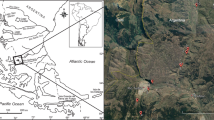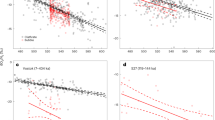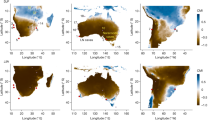Abstract
Biogeographic relationships in the southern hemisphere have puzzled biologists for the last two centuries. Once joined to form the supercontinent Gondwana, Africa, Antarctica, Australia, New Zealand and South America are widely separated by the Pacific and Indian oceans. Sir Joseph Hooker was the first to suggest that Antarctica served as a corridor for plant migration not unlike the land-bridges in the northern hemisphere. While the Antarctic flora was largely erased by glaciation during the Pleistocene, at least some of these Antarctic plant communities found refuge on the subantarctic islands. Here we provide support for the hypothesis that giant herbs persisted in the subantactic islands prior to the onset of Pleistocene glaciation, then dispersed northward in response to glacial advance. Our findings provide further evidence that Antarctica has played a pivotal role in shaping southern hemisphere biogeography.
Similar content being viewed by others
Article PDF
Author information
Authors and Affiliations
Corresponding author
Rights and permissions
About this article
Cite this article
Wagstaff, S., Breitwieser, I., Quinn, C. et al. Age and origin of enigmatic megaherbs from the subantarctic islands. Nat Prec (2007). https://doi.org/10.1038/npre.2007.1272.1
Received:
Accepted:
Published:
DOI: https://doi.org/10.1038/npre.2007.1272.1



